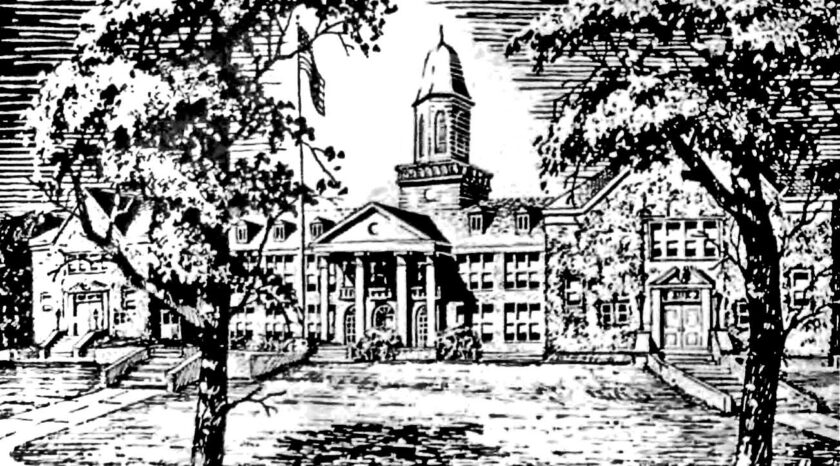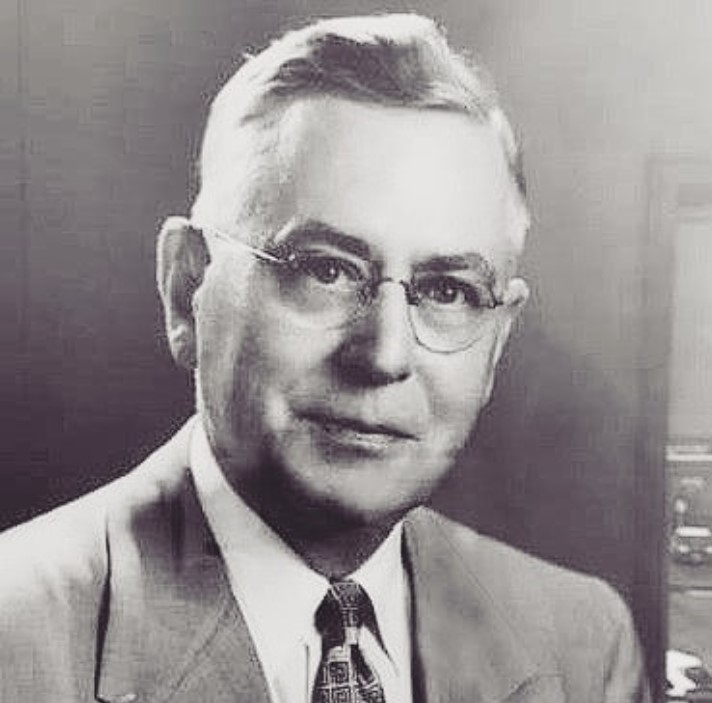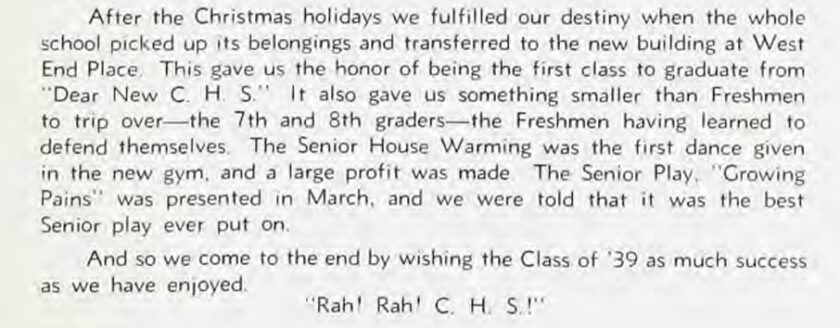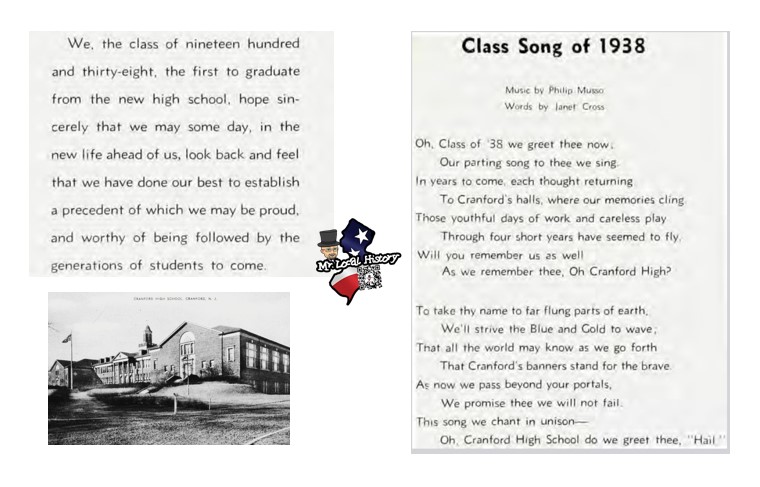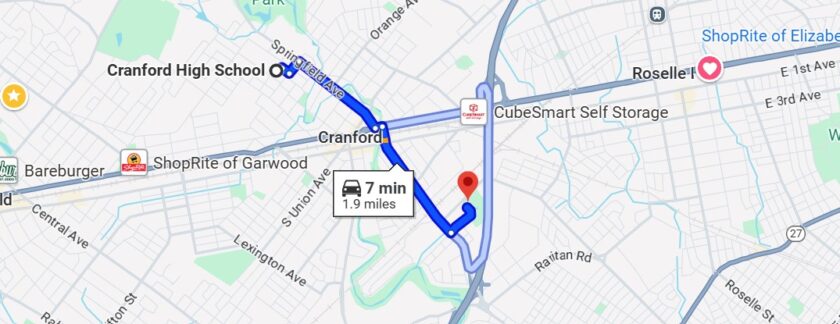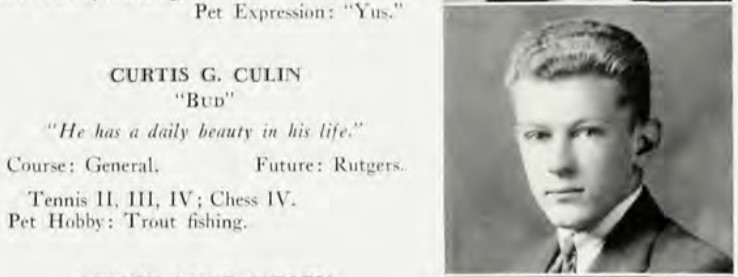Cranford High School – Cranford, New Jersey – Three Locations – Three Icons
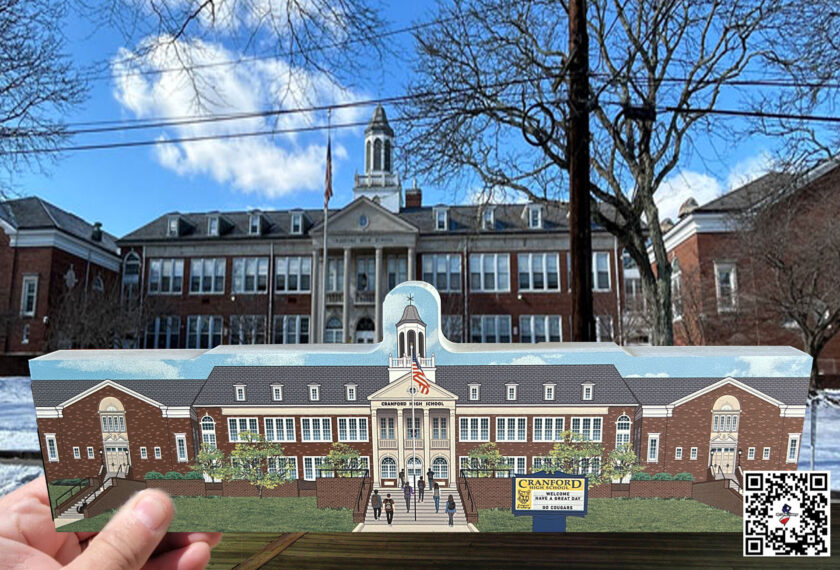
The purpose is to share Cranford’s history artistically and socially. Makes a great graduation gift. But order early, as the previous version made by the Green Thumb Garden Club sold out every year!
1st CHS – Cranford High School at Grant School
Established in 1902, Cranford’s first High School in Cranford, New Jersey, began as a four-year institution at Grant School on the corner of Holly Street and Springfield Avenue. Initially, the school, replaced by a brick structure in 1898 occupied the second and third floors and founded the townships first four year high school.
It was a school for many years before being repurposed because, in 1914, the high school moved to a larger building location a block down the street just to the west of Springfield Avenue and North Union Avenue, diagonal to today’s Municipal Hall, and would be at the Cleveland School.
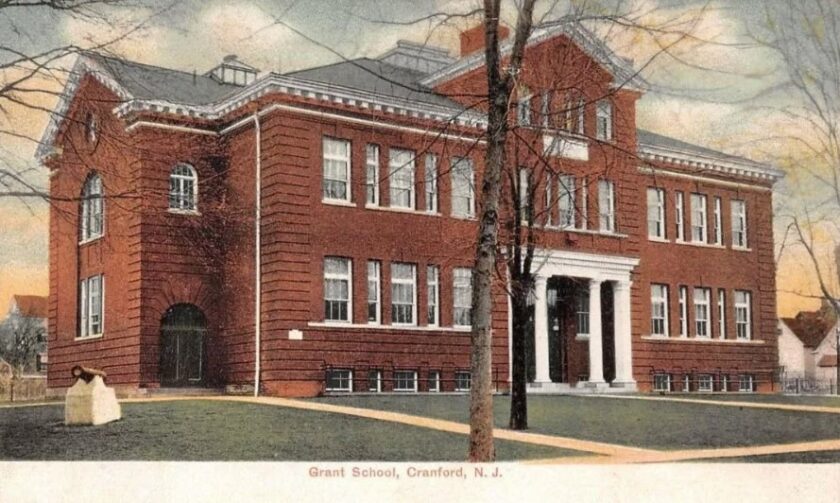
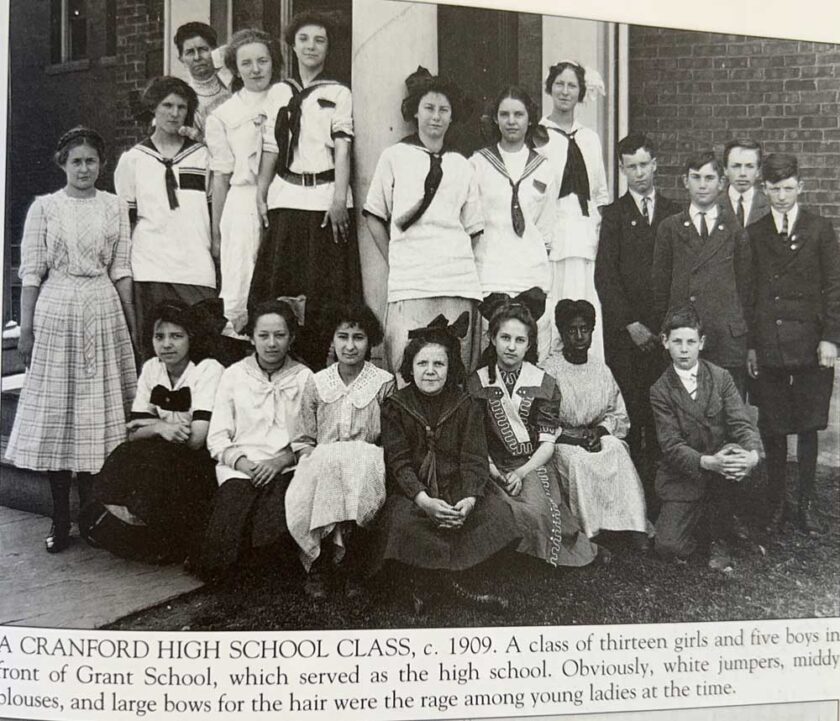
After the high school’s departure, the Grant School building remained in use until 1936. In 1942, Union Junior College (now Union College of Union County, New Jersey) began offering day courses at the Grant School site. The college utilized the building until it moved to its current campus in 1959, when it sat vacant for years and was last inhabited by the Cerebal Palsey training organization. Grant School, which served the Cranford community as their first high school, was razed throughout January 1975.
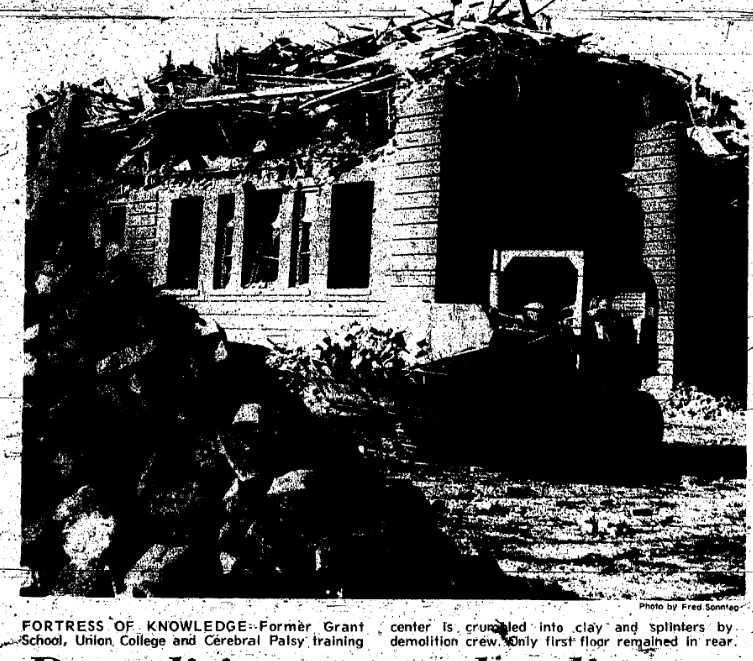
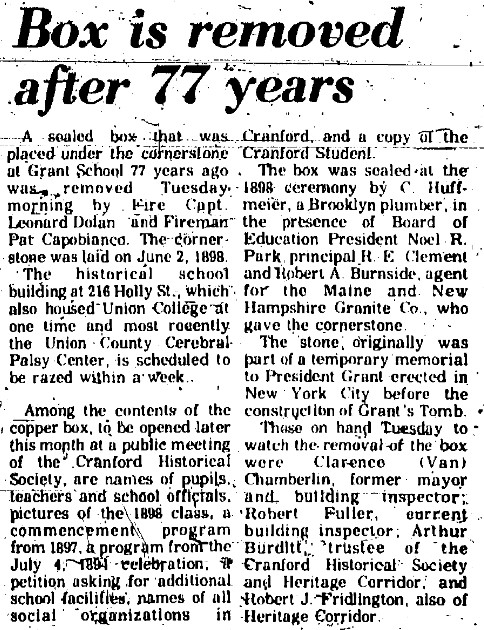
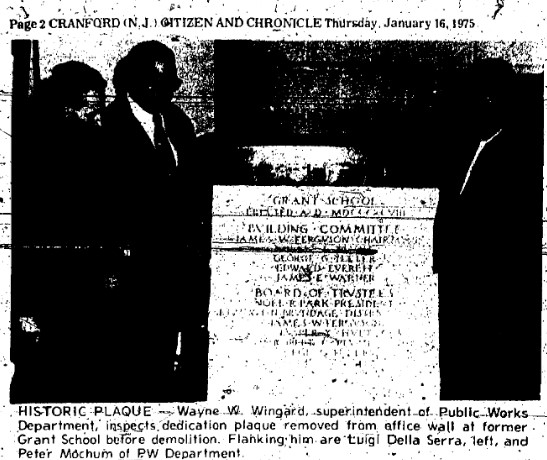
2nd CHS – Cleveland School
In 1913, the township purchased the former Alden Bigelow’s estate on Miln Street for what became the Cleveland School, named after Jerseyian and President Grover Cleveland. The following year, in 1914, the high school relocated from Grant School to Cleveland School, just a block south at North Union Avenue in downtown Cranford, to accommodate a growing student body. It served as an elementary through high school and served as both high school as well as lower grades that served the community for almost six decades.
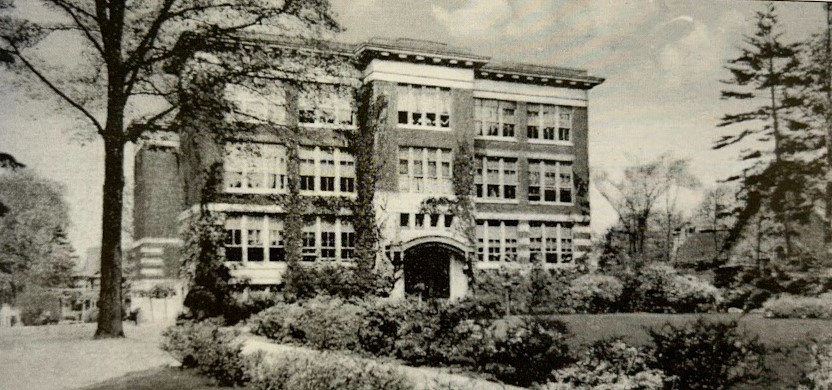
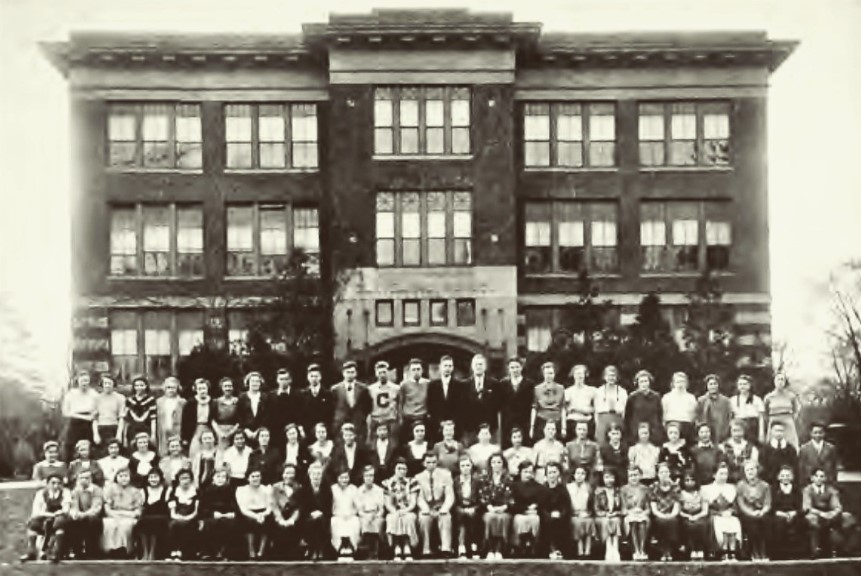
In just over a decade, by the mid-1920s, the Cleveland School operated over capacity, prompting discussions to move the high school again, but this time to build a new dedicated high school building, possibly combining junior and senior grades in one location. But that didn’t happen, and the Cleveland School was updated as best it could to handle the growing student body.
Downtown High School
Alden Street is named after Alden Bradford Bigelow. He moved to Cranford in 1863, where he purchased 37 acres from Josiah Crane. Cranford’s residential area around Springfield, Union, Alden, and Holly Streets formed the residential core of the growing village and was laid out by brothers Alden, William, and Charles Bigelow of the firm Dayton, Eastman, and Bigelow in 1865.
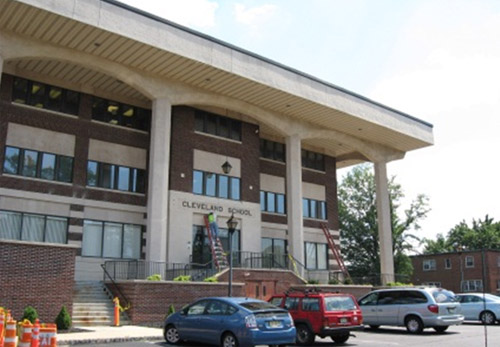
1925 – Report Calls for a New School
Cranford was in a tough spot. The population was growing quickly, and the schools were overcrowded. The Township called upon the Teachers College of Columbia University to survey Cranford’s current and projected school population and rate its existing school’s ability to serve the community’s needs. The Township Committee presented a “Report of the Survey of the Schools of the Township of Cranford, New Jersey: School Year 1924 1925.” The report estimated that the school population would grow from 1,748 in 1924 to 3,848 by 1940, almost doubling the student population and desperately needing additional facilities. Specifically, it recommended to the Board of Education it was time to build a new school:
- A new high school site should be purchased with ten to twenty acres.
- The building to be erected on this site should be a junior-senior high school” (grades 7-12).
- The Cleveland School should be repurposed for elementary school purposes, and the Grant School should be used to house the Board of Education Offices for elementary purposes.
- The sites of both the Lincoln and Sherman Schools should be increased to handle more students.
- The West End and Orange Avenue sites, now owned by the Board of Education, should be reserved for elementary school locations.
The School Board proposed building a new Junior-Senior High School on West End Place for $568,000. Cranford residents continued to capitulate and reject proposals for an adequate high school building, no doubt partly due to the financial hardships brought about by The Great Depression. It wasn’t until 1935, when grants through the Public Works Administration (PWA) were available, that Cranford finally launched a successful program for a new high school building.
The 3rd CHS – The New Cranford High School
With the First World War behind them and the Great Depression in recovery, it was time for Cranford to act and build a new high school. The total cost of the new Cranford High School, including equipment, grading, and replacement of the athletic field (on which it was to be built on West End Place), was $850,000, comprised of the government grant of $352,000 and the township bond issue of $498,000. In March 1935, the Board of Education applied for federal grants and loans, and it received approval in early October 1935.
Despite initial resistance from voters, construction of the current facility commenced in 1936, and the new building was officially dedicated on January 3, 1938.
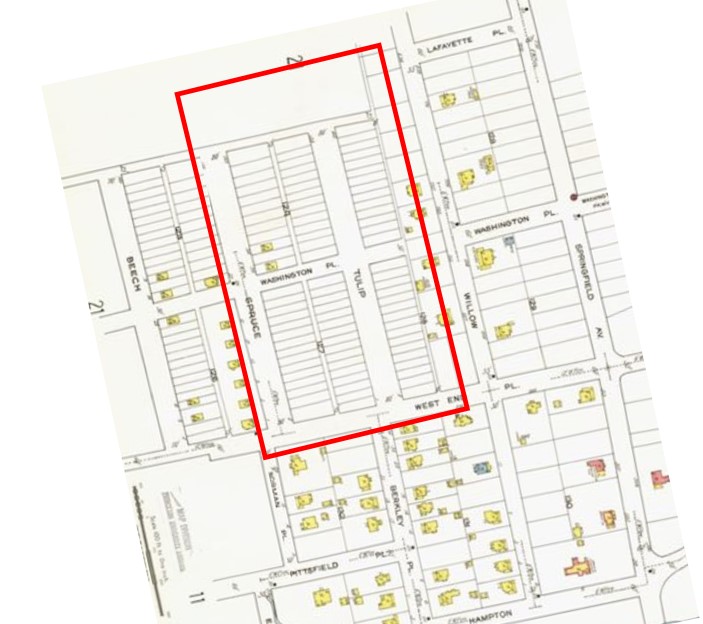
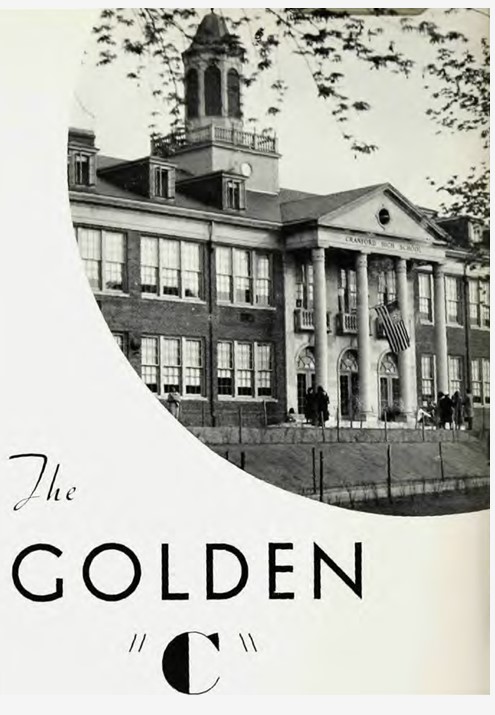

Construction groundbreaking commenced in December 1935, and just over two years later, dedication ceremonies officially opened the new Cranford High School. Over 1,500 people attended the dedication ceremony that featured speeches from notable community leaders and educators who emphasized the new facility’s importance in enhancing educational opportunities. The Cranford High School orchestra opened the 1 hour event with Mozart’s Eine kleine Nachtmusik followed by an invocation by Rev. Frank Magill Sherlock, rector at the Trinity Church. The opening wrapped up with a rousing rendition of the Star Spangled Banner.
One prominent figure was J. A. Plummer, President of Cranford’s Board of Education. In his address, Plummer highlighted the community’s efforts and the financial structuring that made the new high school possible. A tour of CHS followed; there were 49 classrooms, a library, a cafeteria, a cooking room, a gymnasium, chemistry and biological labs, and administrative offices.
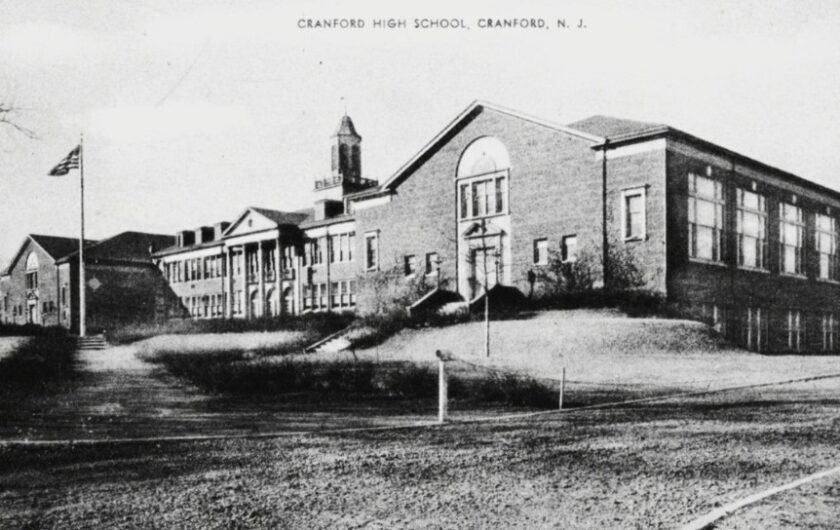
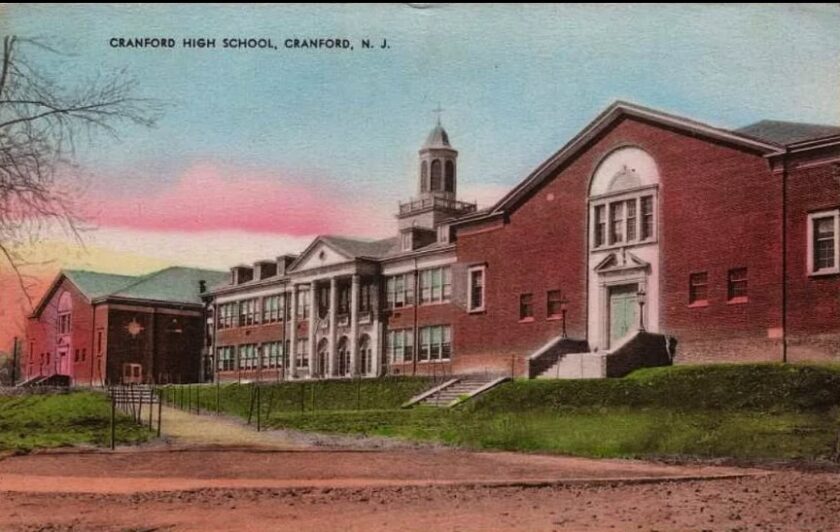
The CHS dedication underscored the community’s commitment to advancing education despite the economic challenges of the Great Depression. The result was the beautiful high school building still serving the Cranford community today. But in true Cranford fashion, the path to that lovely school was a nail-biter, never straight or assured.
1938 First Classes – School Song – Class Photos
Special thanks to the Cranford Public Library for providing physical and digital copies of the 1938 Golden C Yearbook, which showcased the brand new Cranford High School and the first grades that welcomed around 950 students to the new six grade West End Place campus. The Freshman in the class of 1941 would be the first to spend all four years at the new CHS. Many didn’t realize that the new CHS actually had six grades: 7th, 8th, 9th, 10th, 11th, and 12th, all under one roof.

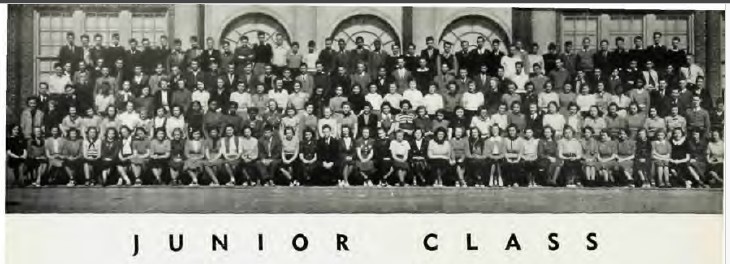
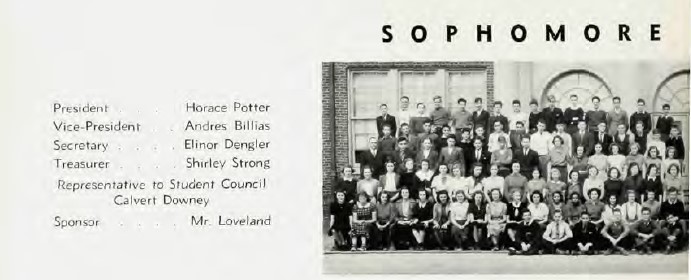
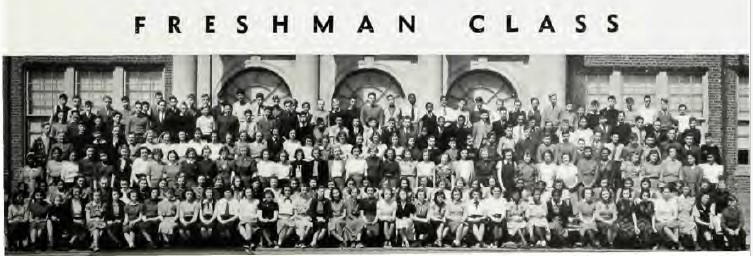
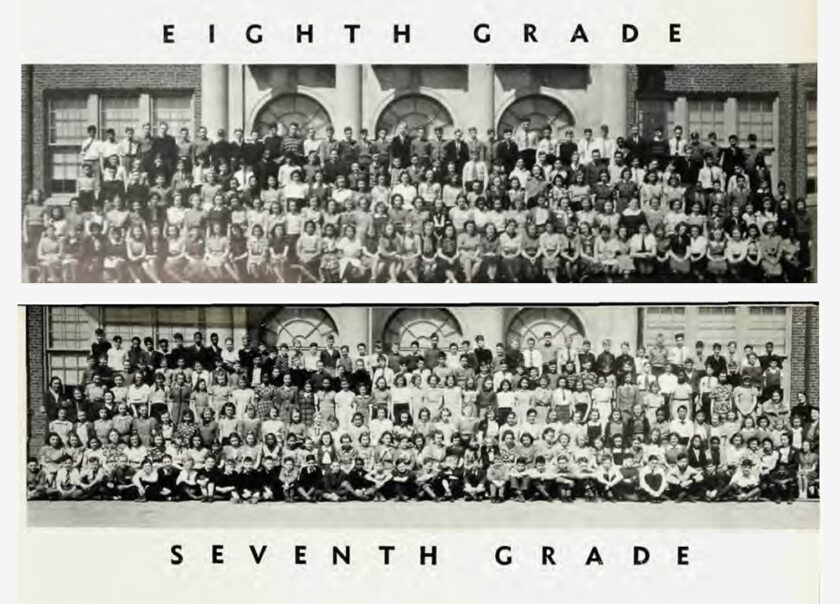
The Cranford Cougar and Colors
The Cranford Cougar over the Years. She has changed for sure.

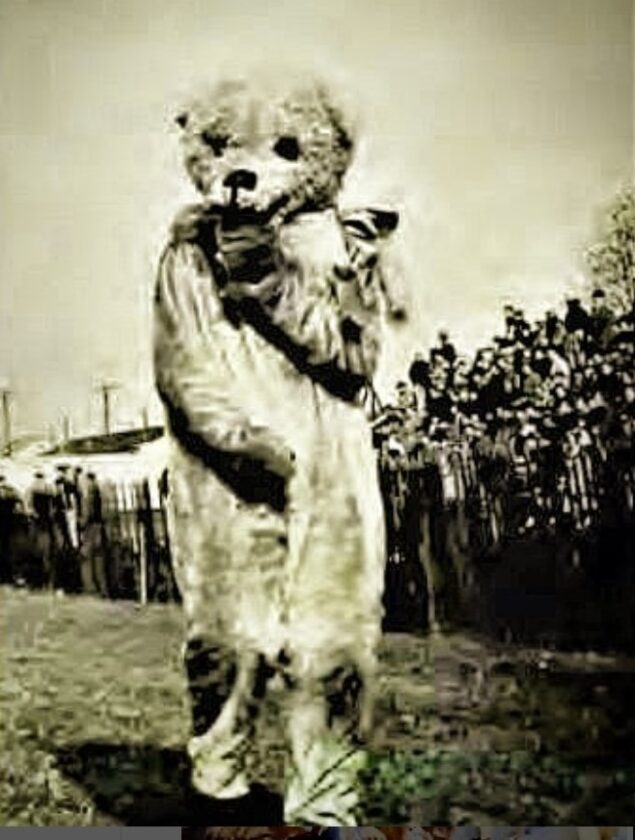
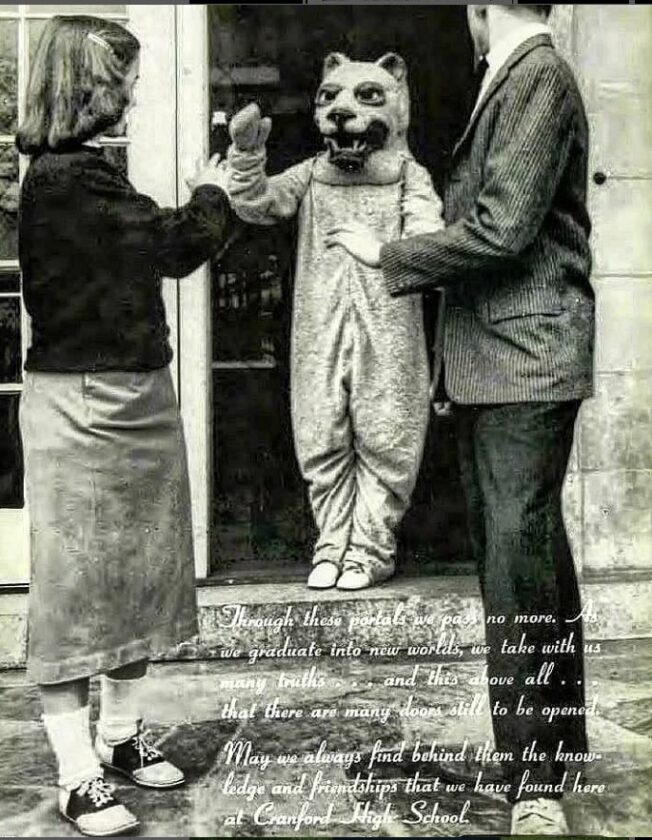
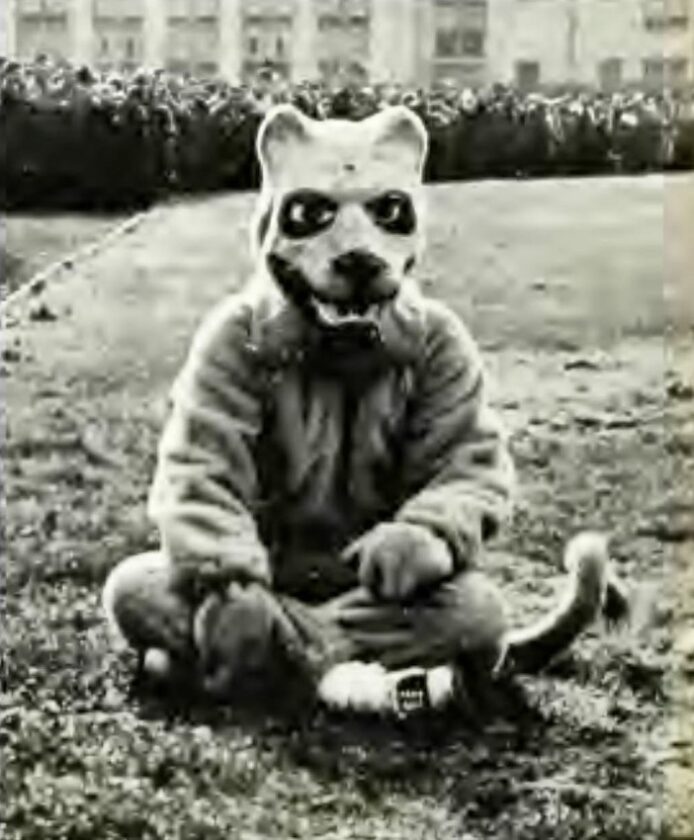
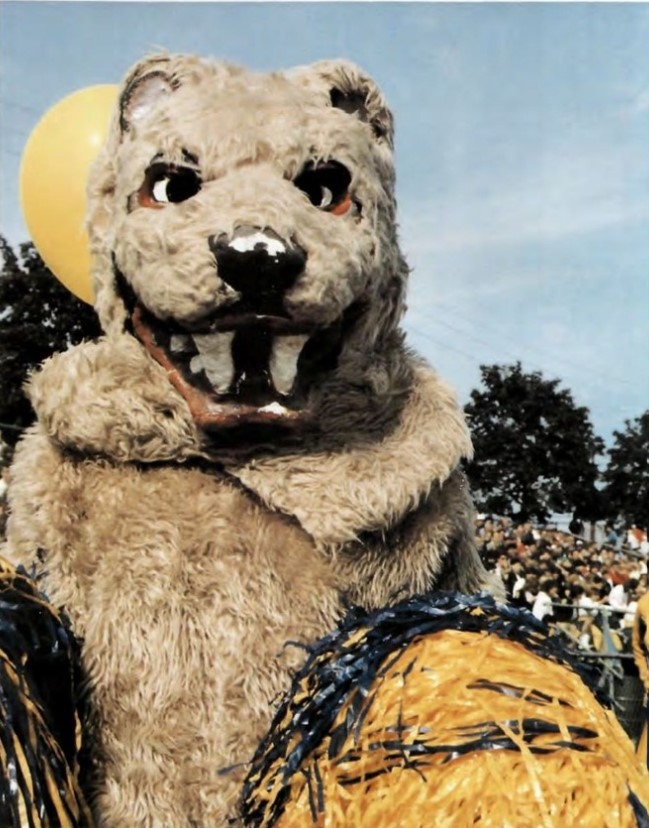
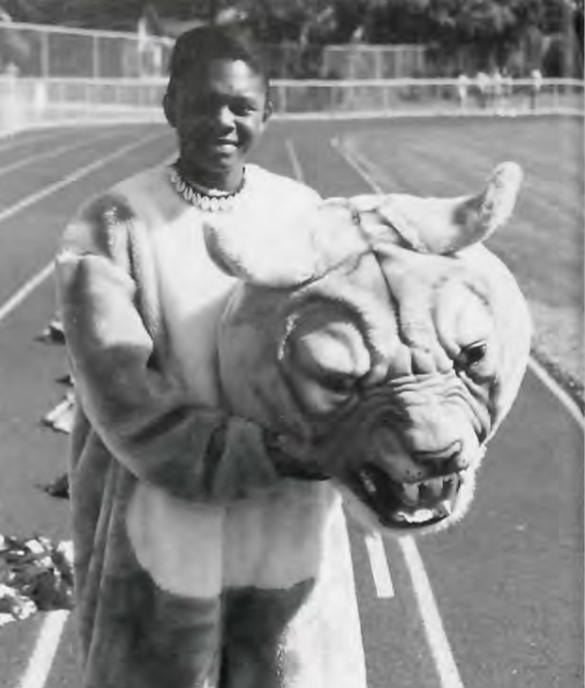

The Cougar, CHS’s mascot, she was chosen to symbolize strength, agility, and courage. The school colors of royal blue symbolize loyalty, wisdom, and confidence, while gold represents success & achievement.
The Memorial Field sports complex was established in 1956 in Cranford, honoring the fallen military and Ray White. Raymond White was a dedicated track and field coach in Cranford, New Jersey, serving from 1966 to 2006. Throughout his 40-year tenure, he earned the title of Union County Coach of the Year ten times and was recognized as the Star-Ledger Coach of the Year.
Shining CHS Graduates
The researchers at MLHP reached out to members of the Cranford HS Alumni to find out who they thought was the most noted CHS graduate. We share two of those individuals: Carol “The Blaze” Blazejowski, a 1974 graduate of Cranford High School, and 1935 CHS graduate Curtis Grubb Culin III,
Carol Blasejowski helped establish the school’s girls’ first basketball team. She would become one of the greatest scorers in the history of women’s basketball and would later earn her induction into the Basketball Hall of Fame in Springfield, Massachusetts. Sports Illustrated would call Blazejowski “the most relentlessly exciting performer in the history of women’s basketball.” She would later serve as the President & General Manager of the WNBA’s New York Liberty.
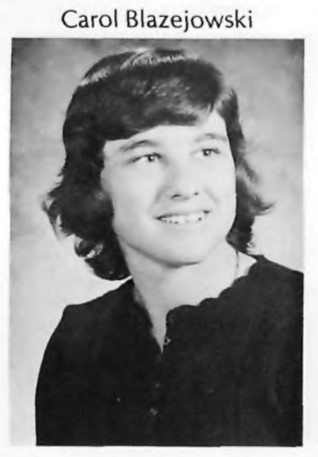
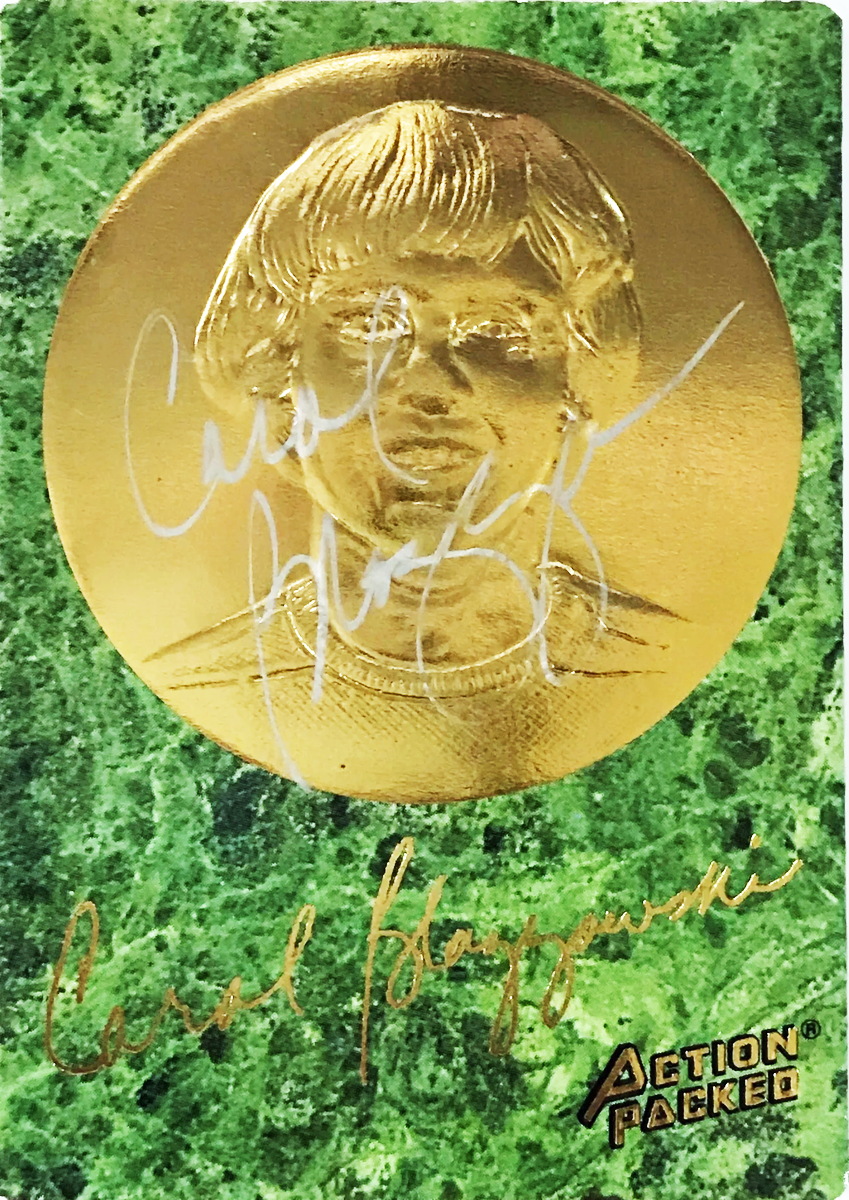
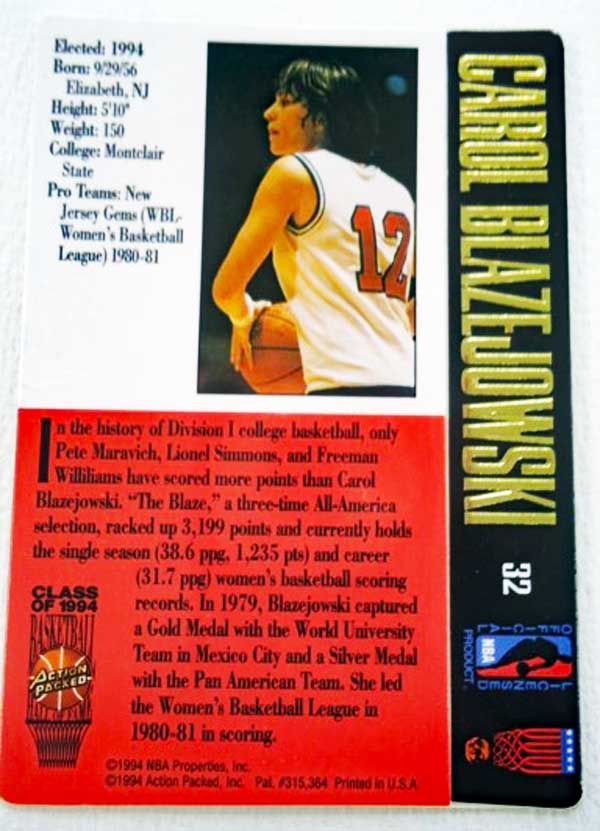
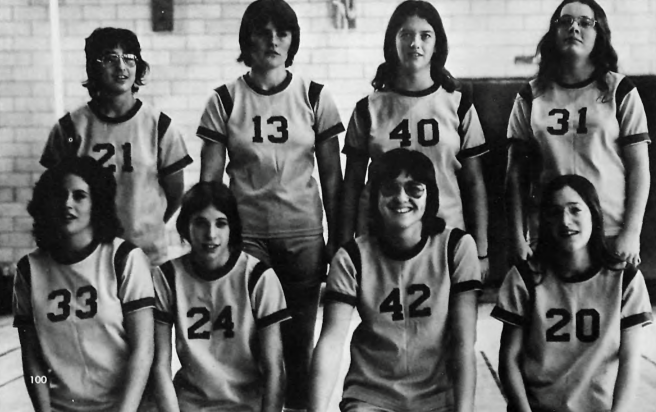
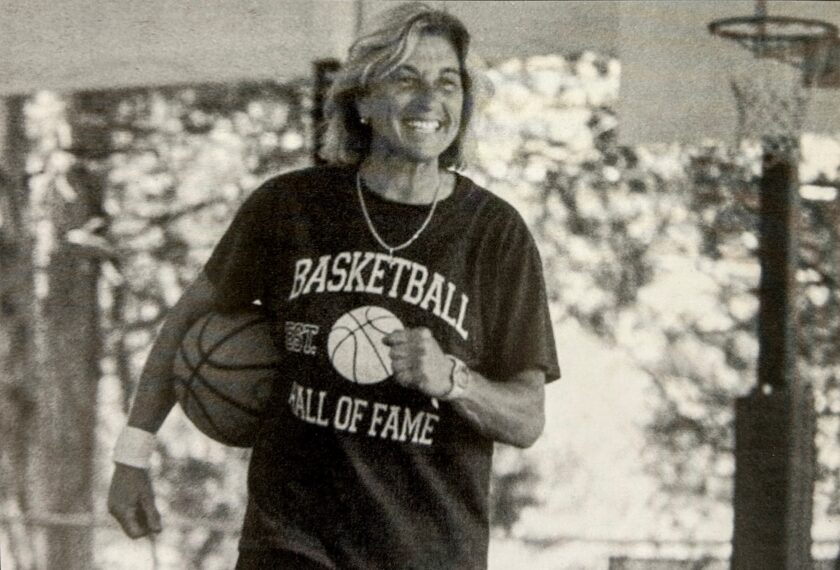
Three team members, Lisa Levine, Carol Blazejowski, and Nancy French, had played together since their days at Lincoln School. Lisa and Carol grew up just doors apart on Cayuga Road. Blazejowski wore the number 24 in high school while playing for Cranford High School, and that number was later retired. Carol went on to an outstanding basketball career, starting with Montclair State. She was the inaugural winner of the Wade Trophy, given to the best women’s collegiate basketball player.
1935 CHS Graduate – Curtis G. Culin
In 1944, Curtis Grubb Culin III was 29 and serving in World War II when he was recommended for a Legion of Merit, awarded for exceptional service. Culin devised a modification to go on the front of the Sherman tank and drive right through the hedgerows without making the tank vulnerable. Culin was a 1935 graduate of Cranford High School.
In what was nicknamed the “Rhino tank,” four prongs (or “tusks”) were mounted on the front of a device that was used as a type of plow to barge through the hedgerows. The device is often referred to by its nickname, The Culin Hedgerow Cutter.
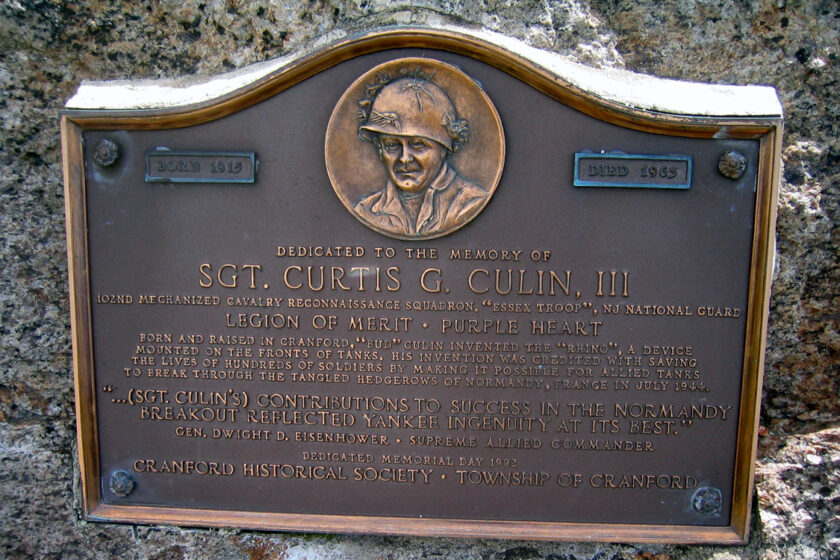
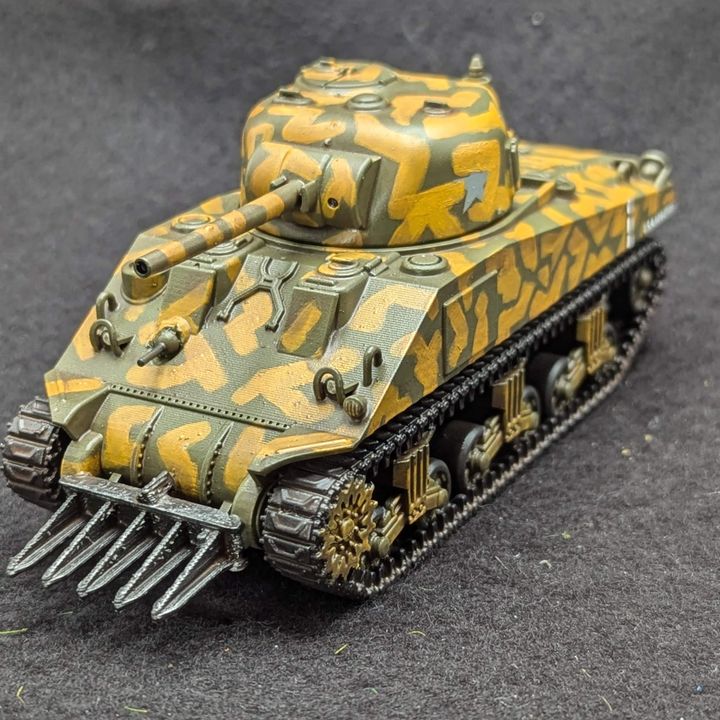
In addition to his Merit of Honor, Culin also received a Purple Heart. In a post-presidential address to the American Society of Mechanical Engineers, President Dwight Eisenhower described the invention’s morale boost on troops: “The biggest and happiest group, I suppose, in all the Allied Armies that night were those that knew that this thing worked. And it worked beautifully.”
Culin’s invention undoubtedly saved lives, minimized casualties, and contributed to Allied victory strategies.
President Dwight D. Eisenhower
Culin entered the service in 1940 and served as a tanker with the 102nd Cavalry Reconnaissance Squadron of the New Jersey National Guard, also called the “Essex Troop,” in the Second Armored Division of the U.S. Army.
Memorable Rivalries
While the school’s primary arch-rival is Westfield High School, Clark’s Johnson Regional is also considered a significant rival, especially in sports like wrestling and football. Currently, the school serves over 1,000 students from 9th-12th grades. Post the most memorable rivalry event you remember in the comments below.
Some of Cranford High School’s most memorable rivalries/events we’ve received from CHS alumni:
- 1963 – Cranford beat Westfield in football. Ellen Zachary Holland
- 1972 – Westfield was ranked #1 in the state in basketball and was undefeated, featuring Tim Goski and Kurt Novachek, both all-state players. Norm Hobbie and Rich Mazzella, along with a monster block and stare down by Jeff Wyatt, gave them their first loss in the old gym. Steven Scheiner
- 1976 – Beating Westfield football team 7-6 in 1976! If I recall correctly, we won because we blocked their extra point. Eric Arbitblit
- 1983 – Cranford upset Rahway to win the Watchung Conference championship in track in 1981. Jeff Zeigler ’83
- 2013 – Cranford wrestling vs Roselle Park Alumni night match. We upset them in the final bout after, I believe, a 10 or more-year losing streak – Michael Pastor
Continuing the Legacy
Brooks Betz, one of the Mr. Local History Trustees, has a bond with Cranford as his family owned the Cranford Canoe Club from the 1970s through the 1990s. After Mr. Betz petitioned the board to recreate a Cranford Canoe Club keepsake, people started noticing and tied the new release to an old collection of keepsakes used as a fundraiser for the Green Thumb Garden Club. Well, the Green Thumb Garden Club keepsake program ended decades ago, and a few residents asked if we’d consider recreating some of the favorite Cranford keepsakes.
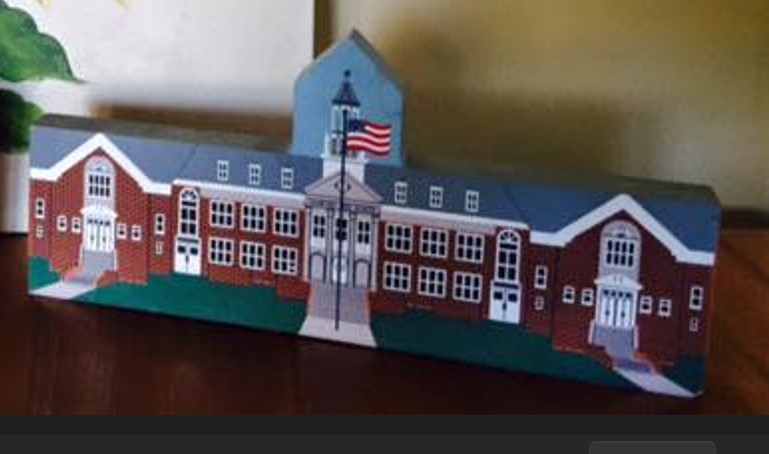
#36 in the New Jersey Historical Keepsake Village Collection
New for 2025 – Cranford High School Collectible
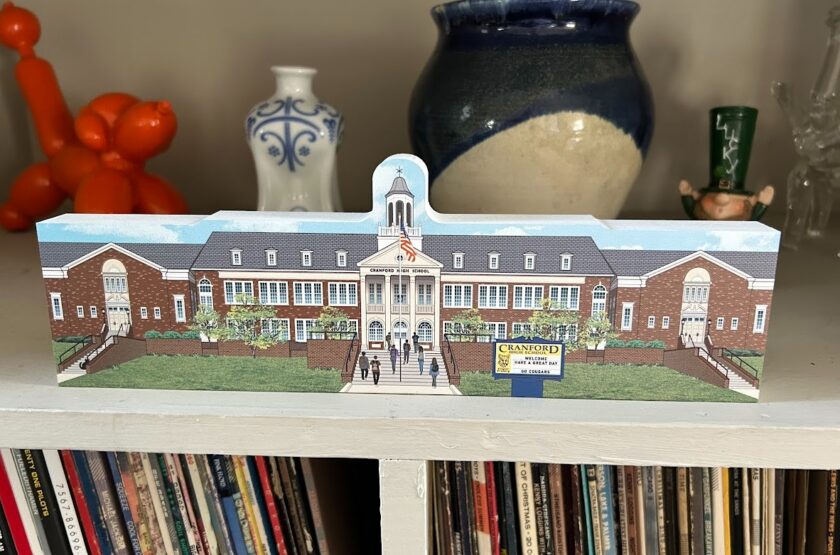
Makes a great graduation gift.
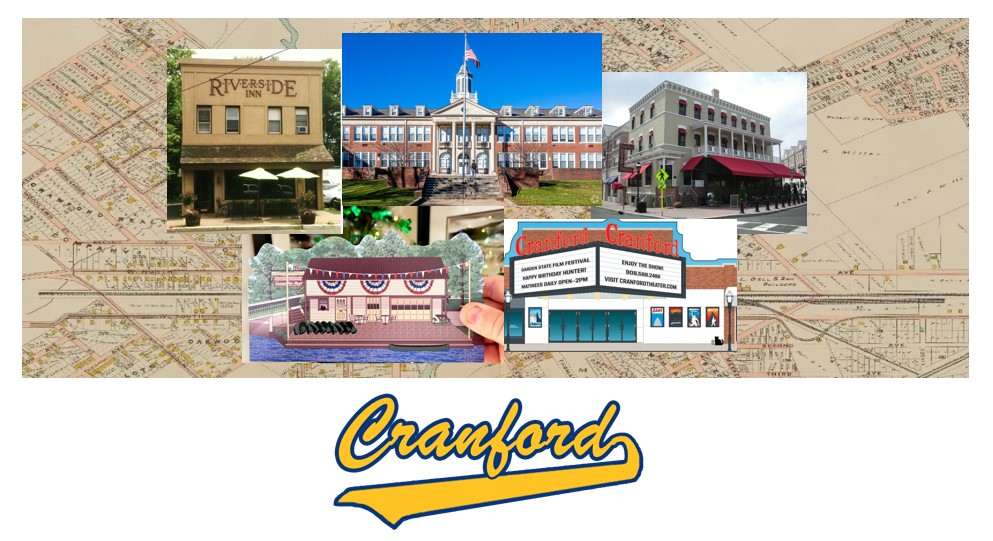
Now, you can order all five (5) Cranford Collectibles at a discount. Details here
More MLH Local History Stories
About the Mr. Local History Project
The Mr. Local History project’s mission is to promote and preserve local history with a social twist. Based in the Somerset Hills, an area in northern Somerset County, New Jersey, the project is an all-volunteer registered 501c3 non-profit that creates social and educational programs and activities that strive to engage and educate in fun new ways throughout our beautiful and historic “Garden State.”
Mr. Local History announced its incorporation as a 501c3 non-profit organization back in 2019. By incorporating, the effort is now recognized as a legal entity to conduct business, organize, and develop fundraising efforts to support programs geared at preserving and promoting local history across New Jersey. All donations are tax-deductible.
About The Author/Researcher
Brooks founded Mr. Local History and the Mr. Local History project. Born in Plainfield, New Jersey, and raised in Westfield, Brooks graduated from Westfield High School in 1980 and later from Bryant University. He and his family owned the Cranford Canoe Club in the 1970s-90s and were part of the Cranford Hockey Club system.
A writer and storyteller at heart, Brooks’ contribution will focus on organization, storytelling, social media, and the internet about local history, mainly in New Jersey and places like Westfield, Cranford, Scotch Plains in Union County, Somerset County, and targeted areas throughout the Garden State. He is married to his wife Jill and has three children. He is a former trustee of the Friends of the Jacobus Vanderveer House in Bedminster, a trustee at the Historical Society of the Somerset Hills, and was also the official Town Historian for Bernards Township. He can be reached at brooksatmrlocalhistorydotorg.

